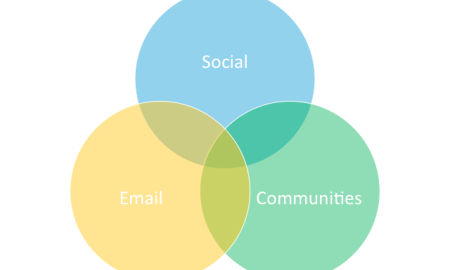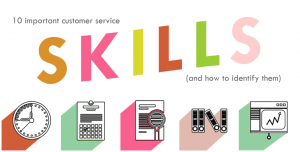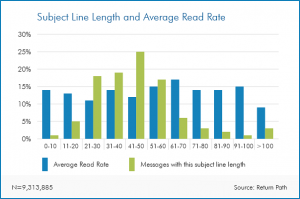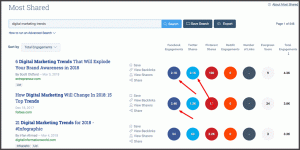
What do you do after hitting publish on a blog post?
If you’re anything like me you probably schedule an update to Twitter, Google+, Facebook and LinkedIn using the headline and a shortened link.
Job done. Promotion scheduled, people will flock.
But it didn’t take me long to realise that this strategy was fundamentally flawed. The only shares on my blog posts were my own and I wasn’t seeing any significant lift in traffic.
Was my content that bad that no one wanted to read it?
Most of the time, quality isn’t the problem. If people aren’t reading your blog it’s probably because you don’t know how to promote it properly.
What I’ve learnt is that blog promotion is not about scheduling Tweets. It’s about building relationships.
Why blog promotion matters
There are an estimated 1.5 million blogs posted every day on the WordPress platform alone.
Even if someone out there is desperate for the content you are creating, how can they possibly find it?
The truth is blogging is a hard slog. It takes determination, patience and persistence. But you can accelerate that journey with a promotional plan that is systemised and repeatable.
Before you promote you must get permission…
Seth Godin introduced the concept of permission in his 1999 book ‘Permission Marketing’ – It revolutionised the way people thought about internet marketing. Today it is still relevant, but has evolved.
Permission today comes after you give up something of value for free, so someone else benefits – advice, a re-tweet, a link or a free download. If you do this regularly enough to build trust, authority and strengthen relationships you gain permission to market to people.
But this permission you accrue over time, isn’t the only prerequisite for effective blog promotion.
Even with permission, you must create epic content.
If you have mediocre content, promotion will only get you so far. Eventually people will figure it out and no one will visit your site. So before you even think about promoting your content, make it epic. Make it so compelling that it should technically “promote itself” (Not that it ever does).
Epic content…
- Is SEO Optimized
- Helps the reader overcome a challenge
- Has an eye-catching image
- Drops the jargon
- Is easy to digest
- Tells a story
- Is validated – meaning that people have engaged with similar content in the past (I validate blog ideas using BuzzSumo)
- Uses sub-headings and dot points
- Includes a unique call-to-action (CTA)
- Mentions influencers
Now you have a killer blog post, how do you promote it?
The promotional system I’m about to show you is something I have tweaked and iterated over time. It’s certainly not perfect, but it seems to work.
Let me show you an example from my own blog.
I published two separate posts on my blog to run a test. The first on the 19th January 2015 and the 2nd just 5 days later on the 24th of January. For the first post I used minimal promotion – just a few basic tweets. It has been shared 9 times on social media, has no comments, no inbound links and next to no traffic.
For the second post I used a targeted promotional plan that I will share with you today. So far it has got 400+ social shares, 37 comments, a couple of inbound links and a 400% increase in traffic… Same blog, 5 days later.
I’m not here to tell you how great I am, my blog is only new with traffic that most of you would snicker at. BUT, the proof is in the pudding for this promotion system. The fact that I could use it on an unknown blog and get such great results proves that anyone can do the same.
Effective Blog Promotion: Social, Email and Communities
This system is designed to be used after publishing every post. It is not necessarily a sequential step-by-step process, but works better when implemented simultaneously across social media, within communities and via email.
Each part of the system is equally important, because it has a compounding effect. If you stop after scheduling a few social media shares, very few people will see your blog post. But if you persist by getting your content in front of more and more people across a diverse range of channels, the benefits will multiply. Effective blog promotion hits all three parts.

Part One: Social Media – Scheduling and Influencer Outreach
Most people will publish a blog and then automate a bunch of posts to social media, thinking their ‘promotion’ is done.
There are two very specific ways to use social media a little differently than everyone else and get your content found by more of the right people.
Step one of the social aspect of blog promotion is to schedule snippets to your chosen networks using a third party tool such as Buffer or Hootsuite. When scheduling these snippets, here are some principles to go by;
- Schedule a minimum of 10 snippets
- Set-up extended automation if your content is evergreen
- Move beyond the headline – It reduces engagement and alienates those that didn’t resonate with your original headline
- Cherry pick the best quotes, questions and stats from the content
Most people stop here. But social media has so much more to give!
Step two is reaching out to influential people you just mentioned in your post and telling them about it. I use BuzzSumo to find social media influencers that have shared similar content in the past.
Here are some principles I follow when reaching out to influencers on social media;
- Make it easy for them, they’re busy
- Be thankful
- Don’t expect anything in return
- Be generous
- Want the relationship more than the share
- Offer value first
The idea of influencer outreach is to get access to a bigger network of engaged readers in your niche. Let’s look at an example of this in action. Below you will see how I reached out to John Lee Dumas from Entrepreneur on Fire who has 30,000 Twitter followers.

You’ll see I did my best to add value to John FIRST. I shared a link to his podcast in my original blog post, then on his request I reviewed his podcast on Stitcher and iTunes. After all of that, he tweeted my blog post. But I would’ve been just as happy with the relationship progression had he not.
If you only have a loose link to someone, Twitter is a good platform to connect. It gives you the chance to get a quick response or re-tweet. If you already have a connection with someone, Google+, LinkedIn or even email are better methods of reaching out.
Snippets and influencer outreach are two social media tactics that I have used with great success. I’m sure you have a whole bunch of ideas bubbling around about how you can better leverage social media. But don’t make it your only way of promoting content.
Part Two: Leveraging Email
People have signed up to your email list for a reason. They like your content and want to check it out when you have fresh new stuff available. This is why it is absolutely crucial not to miss an opportunity to email your list when you send a new blog post live.
But don’t stuff it up. Traditionally bloggers have used email to send self-centred, link-stuffed, spammy content. Instead of asking for anything from your readers, seek to exceed their expectations with extra value.
I follow these principles;
- Only include one very specific call-to-action (CTA) in your email
- Make it about them, not about you. Why should they care? How will this post help them?
- Provide a teaser of the post, so they know what they are about to read
- Use an automated email series to send evergreen content to new subscribers
Ian Cleary from Razor Social nails this concept. Have a look at the screenshot below; it’s a short preview of his blog post with a very specific call-to-action – a link to the blog. Every word in his email is trying to help the reader, not promote himself.

Tip: Make sure to use a link tracker such as Google URL Builder so you can differentiate ‘Direct Traffic’ from ‘Email Traffic’ in Google analytics.
Email (contd) – Link Building and Influencer Outreach
Email is another opportunity for you to reach out to influencers in your niche, plus chase some all-powerful backlinks for your blog content. Use link building as an opportunity to build relationships and expand your online influence.
The ‘Epic Content’ I spoke about earlier in this post, is primed for finding great link opportunities – especially if you have followed the principle about validation. Here’s a quick step-by-step I follow for identifying link opportunities to promote my content;
Step 1 – Create a spreadsheet in excel to capture all the information. I include columns such as ‘Keyword’, ‘Top Articles’, ‘Link Opportunities’ and ‘Contact’. Below is an example.
Step 2 – Use your Google adwords account or a third party tool such as KWFinder.com to search for your chosen keywords. I’ve shown an example of ‘Get Backlinks’ in the image below. At this stage I would record the top articles in the search as well as some of the long-tail phrases associated with the broader keyword topic. Tip: If you want to go above and beyond to spot link opportunities you could repeat this process for all the keyword phrases you capture.

Step 3 – Use Moz Open Site Explorer, BuzzSumo or Ahrefs to find what domains have linked to each of the top articles for this keyword. See Moz below.

Step 4 – Use the ‘Page Authority’ ranking system to pick your targets. My tip would be to get a diverse range of linkers, not just the high authority sites. This way you increase your chances of obtaining backlinks.
Step 5 – Discover the names and email addresses of the people you will reach out to from each of these sites. You might find Thrust.io helpful for this step, it is a service that generates email addresses for you based on a name and a domain.
Step 6 – Get in touch with potential linkers – Remembering the principles about influencer outreach I mentioned earlier.
I had some success with this process recently, when I tracked a direct backlink from an interaction I had with Ana Hoffman from Traffic Generation Café. In this case I made the connection over Google+ originally, not email. See below.

Then a week later, I was in her weekly round-up post.

Again, relationships were the key to this promotion tactic – not the process.
Email (contd); Commenters outreach
I discovered this content promotion tactic thanks to Luke Jordan from Intergeek – the short story is Luke used it on me, and it worked! See his original email below;

The idea is that after you publish an epic piece of content, you reach out to people who have engaged with similar content in the past. When I say engaged, in this case I am referring to people that have commented on blog posts. If you have done some research for link opportunities, you probably have a bunch of blog posts in your pipeline where you can find people that have interacted with similar content before.
I have tried this technique myself for a couple of posts and the verdict is it works really well. Everyone I have reached out to have responded to my email, shared the posts on social media and a large proportion of them have commented on the posts too. (Some even linked back to them on their own blogs)
This technique will build some great relationships for you, increase the engagement on your blog, bump up your social shares – and if you’re lucky land you a link or a subscriber.
Part Three: Promoting to Communities
Communities I define as groups of people that create conversations online about a specific topic, in a specific niche. Examples of communities I look to target with content promotion include; Google+ communities, LinkedIn groups, industry forums, Reddit and Scoop.it.
Why should you promote your content to communities?
- Not many people are leveraging them well (most promotion is focused on Twitter or Facebook)
- By nature, community members are there to discover great content
- Communities are extremely targeted, so you can be selective
- Community members are already engaged in a conversation on a topic, you can add to that
Let’s have a look at two examples of communities; Google+ and Scoop.it.
Google+ is somewhat of an untapped source of engaged people waiting to share your content. But most people lose faith and give up before they discover its real power. The key is not to post ‘Publicly’ but to post to super-targeted communities that crave your content.
Here is an example of a post I shared to my public Google+ profile, 2 plus ones and no re-shares.

Only days later, I shared another post on Google+ but I decided this time to share it with the SEO and Content Marketing Masters community. I noted a significant shift in engagement, 32 plus ones and 9 re-shares.

Next up – Scoop.it
Scoop.it, if you haven’t heard of it, is a social network where people can create a pin board of articles based on a specific topic or interest. It’s just like an online magazine. Again it is an untapped source of targeted consumers, all looking for great content to share.
When you first sign up for Scoop.it (it’s free) start by setting up your own page. Then look around for some other high traffic pages in your niche by using the search function at the top of the dashboard.

Once you find a few engaged pages, you can get into your content promotion straight away. There two ways to promote your blog posts on Scoop.it;
- ‘Scoop it’ to your own page. You want to share regularly to your own page, as well as curate other people’s content so you begin to build relationships.
- Suggest it to another page. This is an amazing feature, you can suggest your content to most Scoop.it pages and generally within 24 hours you have an accept or decline response.

This takes you next to no time, you are literally pasting a link into a form and the chances of them accepting your content are about 50-60%. This is an audience you never would have engaged with otherwise. See above an example of a community with over 50,000 views and a suggest function.
Conclusion
The punchline is; don’t just schedule a bunch of tweets and forget about promotion. Instead, build relationships and milk your epic content for everything it’s worth.
Each phase of the promotion system in this post gets your blog post in front of more people; social media, email and communities. The more you time you commit to each part, the better the results you will see. You never know when that tipping point will come.
I’m not claiming that this is the ONLY way to promote your content but it is one way that has proven to be quite successful. The key thing to remember is that content promotion is not just about social media. It is about building relationships. And those relationships span far beyond just promoting your blog content.
What other tactics have you got some traction with when promoting your blog posts?
You can download this three-part promotion system as a free PDF checklist.
This post was originally published on Bluewire Media.
(289)









